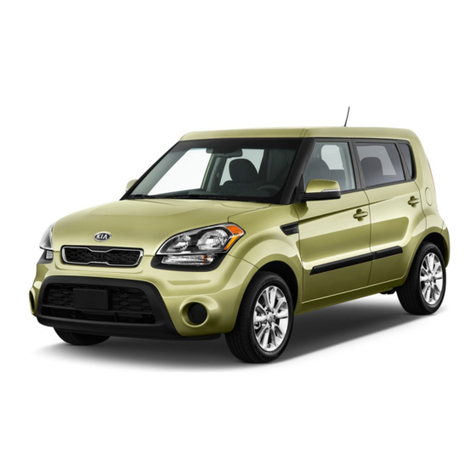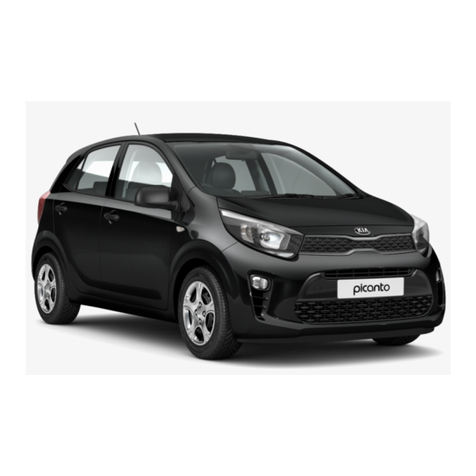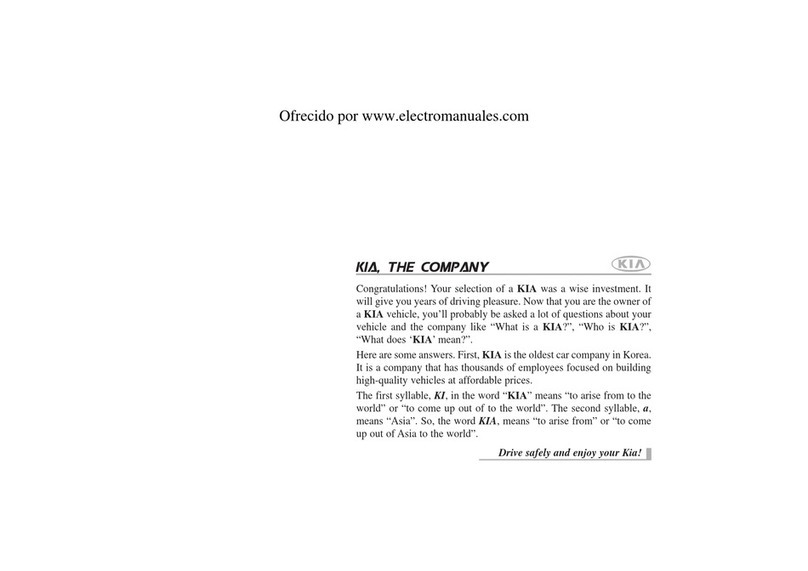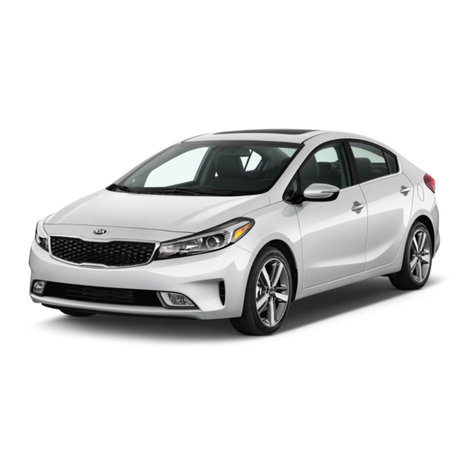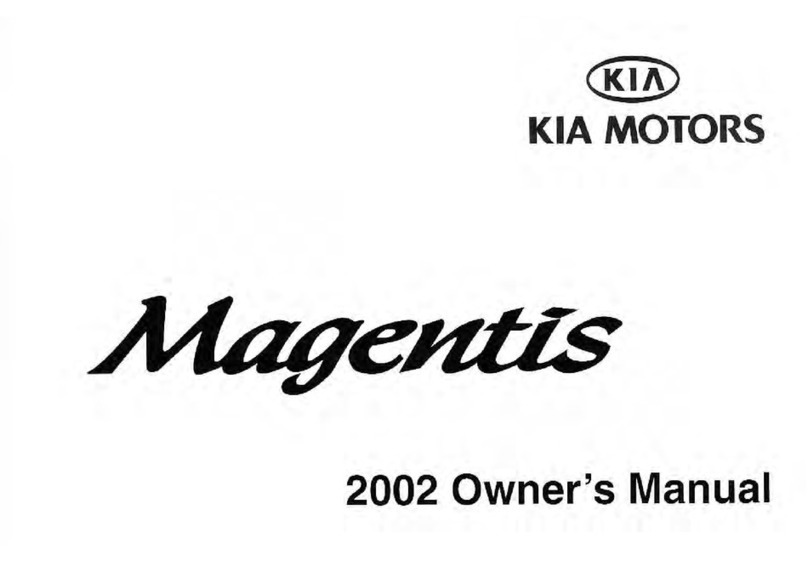
GI -8 GENERAL INFORMATION
AIR BAG WARNING / CAUTION LABEL (CONT’D)
A:WARNING
SEE OWNER’S MANUAL.
This car is equipped a side airbag for each front seat.
•Do not use any accessory seat covers.
•Use of other seat covers could reduce the
effect of the system.
•Do not install any accessories on the side
or near the side airbag.
•Do not use excessive force on the side of the seal.
•For further information, see the owner’s manual.
B:CAUTION
AIRBAG ESPE UNIT
Detach connector before unmounting. Assemble
strictly according to manual instructions.
C : PASSENGER MODULE CAUTION
CAUTION
Don’t open, remove or transfer to another vehicle.
Risk of malfunction and bodily injury!
This unit is to be installed and/or dismantled by
trained personnel only. This item contains an
explosivetobeinstalledigniter.
D : SUPPLEMENTAL RESTRAINT SYSTEM
(AIRBAG) INFORMATION
•The airbag is a Supplement Restraint
System (SRS).
You must always wear the seat belts.
•The airbag system condition is normal
when the "SRS" lamp in the cluster flashes
approximately 6 times after the ignition key
is turned on and then goes off.
•If any of the following condition occur, the
system must be serviced.
• "SRS" lamp does not light up when
the key is turned on.
• "SRS" lamp stays lit or flashes continuously.
• The airbag has inflated.
•The airbag system must be inspected by an
authorized dealer ten years after the vehicle
manufacture date shown on the certification label,
located on left front door opening area.
WARNING
Failure to the above instructions may result in injury
to you or other occupants in the vehicle
•See the "SRS" section in Owner’s Manual for
more information about airbags.
